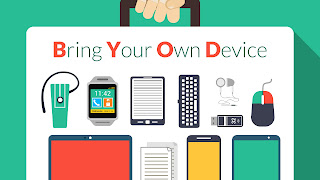Twitter Feed
Crisis Response Using Cloud Computing
Cloud computing is more than servers and storage. In a crisis situation it can actually be a lifesaver. BlackBerry, in fact, has just become the first cloud-based crisis…
Cloudy Thinking and Digital Transformation
(Originally posted on the Engility Corporation Blog) There’s a lot to gain from cloud computing, but success requires a thoughtful and enterprise focused approach. Cloud computing decouples data and…
Blockchain Business Innovation
Is there more than bitcoin to blockchain? Absolutely, because today’s blockchain is opening up a pathtowards the delivery of trusted online services. To understand this statement, you need…
How Quantum computing with DNA storage will affect your health
By Guest Contributor: Taran Volckhausen, Contributing Editor at Vector (https://www.indexer.me) Moore’s Law, which states that processing speeds will double every two years as we cram more and more silicon…
36 Shades of Hybrid IT
Photo credit: Shutterstock Everyone has heard of the 50 Shades of Grey. But do you know the “36 Shades of Hybrid IT”? These shades are a new way of describing…
Digital Transformation Driven by ITaaS
Photo credit: Shutterstock When executing an effective digital transformation strategy, management is tasked with placing the right workload into the most appropriate IT environment. This represents a shift from…
IBM Interconnect 2017: Cloud, Cognitive and Data!
A couple of weeks ago while attending IBM Interconnect 2017 I had the awesome opportunity to participate in the IBM Interconnect 2017 Podcast Series with Dez Blanchfield. I not only…
The BYOD Problem
Everyone wants their device of choice right there next to them 24/7. To an employer, however, that smart device is nothing more than a dagger posed to rip apart every…
Both Sides of Enterprise Mobility
Photo credit: Shutterstock Enterprise mobility has become table stakes in the world of business. The ability to access current information at any time, from anywhere, on any device has really…
Cloud Computing Forensics Readiness
Photo credit: Shuterstock In today’s globally connected world, data security breaches are bound to occur. This, in turn, increases the importance of digital forensic readiness, or the ability to access…
- Increased employee mobility (63%), satisfaction (56%) and productivity (55%) dominate as the top drivers of BYOD. These employee related drivers are considered more important than reduced costs (47%).
- Security (39%) and employee privacy (12%) are the biggest inhibitors of BYOD adoption.
- 20% of surveyed organizations have suffered a mobile security breach, primarily driven by malware and malicious WiFi.
- Security threats to BYOD impose heavy burdens on organizations’ IT resources (35%) and help desk workloads (27%).
- Despite increasing mobile security threats, data breaches and new regulations, only 30% of organizations are increasing security budgets for BYOD in the next 12 months and 37% have no plans to change their security budgets.
- 72% – Data leakage/loss
- 56% – Unauthorized access to company data and systems
- 54% – Downloading of unsafe apps or content
- 52% – Malware
- 50% – Lost or stolen devices
- 49% – Vulnerability exploitation
- 48% – Lack of control on endpoint security
- 39% – Infrequent software updates
- 38% – Compliance
1. Create your policy before procuring technology: To effectively use mobile device management (MDM) technology for employee owned devices Policy must precede technology. Also note that these policies will have broad corporate-wide implications for IT, HR, legal, and security.
- Mobile device management
- Application security assessments
- Application testing services
- Application source code security assessments; and
- Embedded device security.
This post was brought to you by IBM Global Technology Services. For more content like this, visit ITBizAdvisor.com.
( Thank you. If you enjoyed this article, get free updates by email or RSS – © Copyright Kevin L. Jackson 2017)
Cloud Computing
- CPUcoin Expands CPU/GPU Power Sharing with Cudo Ventures Enterprise Network Partnership
- CPUcoin Expands CPU/GPU Power Sharing with Cudo Ventures Enterprise Network Partnership
- Route1 Announces Q2 2019 Financial Results
- CPUcoin Expands CPU/GPU Power Sharing with Cudo Ventures Enterprise Network Partnership
- ChannelAdvisor to Present at the D.A. Davidson 18th Annual Technology Conference
Cybersecurity
- Route1 Announces Q2 2019 Financial Results
- FIRST US BANCSHARES, INC. DECLARES CASH DIVIDEND
- Business Continuity Management Planning Solution Market is Expected to Grow ~ US$ 1.6 Bn by the end of 2029 - PMR
- Atos delivers Quantum-Learning-as-a-Service to Xofia to enable artificial intelligence solutions
- New Ares IoT Botnet discovered on Android OS based Set-Top Boxes


